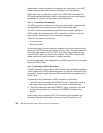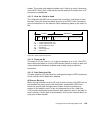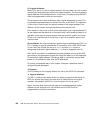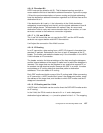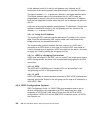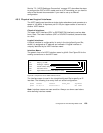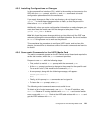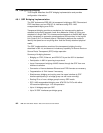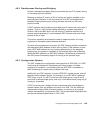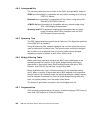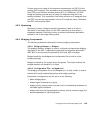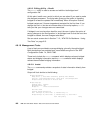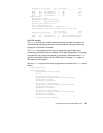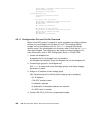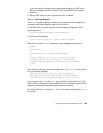
142 IBM 9077 SP Switch Router: Get Connected to the SP Switch
4.6 Configuring Bridging
This Chapter describes the GRF bridging implementation and provides
configuration information.
4.6.1 GRF Bridging Implementation
The GRF implements IEEE 802.1d transparent bridging on GRF Ethernet and
FDDI interfaces, and on ATM OC-3c interfaces using RFC-1483
encapsulated bridging over PVCs.
Transparent bridging provides a mechanism for interconnecting stations
attached to physically separate Local Area Networks (LANs) as if they are
attached to a single LAN. This interconnection happens at the 802 MAC layer
and is transparent to protocols operating above this boundary in the Logical
Link Control (LLC) or Network layers. Participating stations are unable to
identify that peers are on anything other than the directly attached physical
media.
The GRF implementation consists of the transparent bridging function
described in 802.1d, and does not include any capability for Source Route or
Source Route Transparent (SRT) bridge operation.
Summary of bridging features:
• Bridging on FDDI, Ethernet, and ATM OC-3c per the 802.1d standard
• Participation in 802.1d spanning tree protocol
• Layer-2 transparent bridging of MAC frames through the GRF from one
interface to another
• Conversion of frames between Ethernet and FDDI formats as necessary
• Fragmentation of IPv4 frames if necessary
• Simultaneous bridging and routing over the same interface (a GRF
interface participating in a bridge group can still route normally)
• Routing IP to or from a bridge group from any GRF media
• RFC-1483 encapsulated bridging over ATM OC-3c PVCs with either
VC-based multiplexing or LLC encapsulation
• Up to 16 bridge groups per GRF
• Up to 32 GRF interfaces per bridge group



